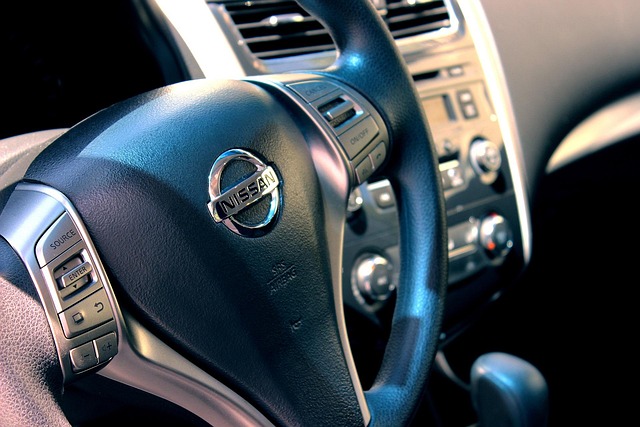Learn how to register your car in California with our comprehensive guide. Understanding the state’s requirements, gathering essential documents, and successfully completing the DMV VIN verification process are key steps. We’ll walk you through choosing between online or in-person registration and paying associated fees. By following these steps, you’ll ensure a smooth and legal car registration experience tailored to California’s regulations. Also, discover the significance of dmv vin verification in our detailed step-by-step section.
- Understand California Car Registration Requirements
- Gather Necessary Documents for Registration
- Perform DMV VIN Verification Step-by-Step
- Choose a Registration Method: Online or In-Person
- Pay California Car Registration Fees and Submit Application
Understand California Car Registration Requirements

Before registering your car in California, it’s crucial to understand the state’s specific requirements for vehicle identification number (VIN) verification. The California Department of Motor Vehicles (DMV) mandates a rigorous process that includes a VIN inspection to ensure the authenticity and history of your vehicle. This is essential for both safety and regulatory compliance. One convenient option available in California is a mobile vin inspection or vin verification, which allows you to complete this step without visiting a DMV office.
During the registration process, the DMV will cross-reference your car’s VIN with their records to verify its identity and ensure it meets all safety standards. This dmv vin verification is a critical component of the registration procedure, ensuring that only legitimate vehicles are allowed on California roads. By utilizing mobile vin inspection services, you can streamline this process, saving time and effort while adhering to California’s stringent car registration requirements.
Gather Necessary Documents for Registration

Before you begin the registration process, it’s crucial to gather all necessary documents. In California, you’ll need your vehicle’s Registration Application (Form DVF 140), which can be obtained from the Department of Motor Vehicles (DMV) or online. Additionally, you’ll require proof of insurance, a valid driver’s license, and your vehicle’s title. The Vehicle Identification Number (VIN) is a critical piece of information that needs to be verified accurately during the registration. Many California residents opt for a convenient mobile vin inspection or mobile vin verification service to ensure this step is completed efficiently.
For out-of-state transfers, you might need additional documents such as a bill of sale and a letter from the previous owner confirming the transfer. It’s important to check with your local DMV office for specific requirements. Remember, proper documentation ensures a smooth registration process at the DMV, so take the time to gather everything needed before visiting the office or completing any online forms.
Perform DMV VIN Verification Step-by-Step

To begin the DMV VIN verification process, gather all necessary documents and head to your local California Department of Motor Vehicles (DMV) office. First, fill out a Vehicle Identification Number (VIN) Verification Application form, providing details about the vehicle’s make, model, year, and your personal information. A mobile vin verifier or mobile vin inspection tool can be helpful here, ensuring you have accurate data ready for submission.
Next, present the required documents, including proof of ownership, registration, insurance, and identification. The DMV official will then cross-reference the provided VIN with their records to verify its authenticity. This step is crucial to ensure that your vehicle matches the documentation and helps prevent fraud or identity theft.
Choose a Registration Method: Online or In-Person

When registering your car in California, you have two primary options: completing the process online or visiting a DMV (Department of Motor Vehicles) office in person. Both methods offer convenience and efficiency, but each has its advantages. Online registration is typically faster and allows you to skip waiting times at the DMV. You can also take advantage of 24/7 accessibility, enabling you to register your vehicle from the comfort of your home or on-the-go using your smartphone.
On the other hand, in-person registration provides a more direct approach. If you prefer face-to-face interaction or have complex situations requiring immediate attention, visiting a DMV office might be preferable. Moreover, for those who need their vehicles registered as soon as possible, an in-person visit allows for faster processing times, especially if you’ve already completed the necessary paperwork and have all required documents, including a valid DMV vin inspection or a mobile vin verification for your vehicle’s unique identifier (VIN).
Pay California Car Registration Fees and Submit Application

After confirming your vehicle’s eligibility for registration, the next step is to pay the California car registration fees and submit your application. These fees vary based on the type and age of your vehicle, so be sure to check the official DMV website or visit a local DMV office for accurate information. You can typically pay online, by phone, or in person using various payment methods like debit or credit cards, checks, or money orders.
Once you’ve paid the fees, you’ll need to complete and submit an application form, often referred to as the “Application for California Vehicle Registration.” This process might be simpler with a mobile vin inspection service that allows you to verify your vehicle’s identity (VIN) digitally, ensuring faster processing and potential savings in time and effort. Remember to include all necessary documentation, such as proof of insurance, ownership records, and any applicable fees or charges.
Registering a car in California is a straightforward process that requires understanding specific requirements and gathering essential documents. By following these steps, including performing a DMV VIN verification, you can efficiently choose between online or in-person registration methods. Remember to pay the corresponding fees and submit your application to ensure your vehicle’s legal status in the Golden State.
